Opinion & Analysis
The myth behind the “one-way miss”
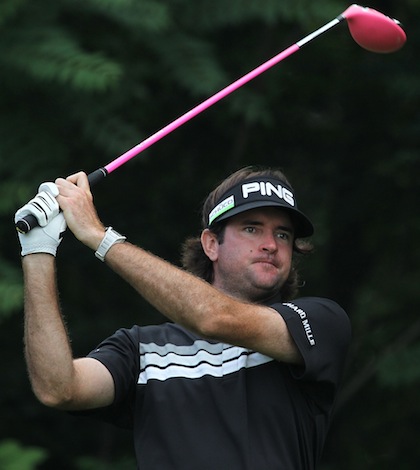
We often hear from professional golfers how important it is to have a “one way miss’”and to be able to “take one side of the golf course out of play” in order to drive the ball more effectively. However, statistical evidence indicates that this is not quite an accurate depiction of how the best golfers in the world effectively drive the ball.
A metric that I have explored quite frequently is “miss bias.” This is the percentage of time a player misses a fairway right or left. What I have found is that there is no direction that is better to miss the fairway. Having a right miss bias is equal to having a left miss bias. Typically, what is more important is the ratio of the miss bias.
I feel the best indicator of driving success is to look at the top players in my “Driving Effectiveness” ranking. Driving Effectiveness is based on algorithm that considers the following metrics:
- Driving distance
- Fairway percentage
- Average distance from the edge of fairway (on drives that miss the fairway)
- Percentage of fairway bunkers hit
- Missed fairways and other (shots that end up in the trees, water, O.B, etc.)
Here is a table with the current top-20 players in Driving Effectiveness and their Miss Bias.
As the chart shows, 13 of the top-20 ranked players have a miss bias that is no more than 55 percent either way.
Now, let’s look at this year’s players with miss biases that are greater than 60 percent and their rankings in Driving Effectiveness.
Tour golfers can strike the ball well off the tee with a large miss bias, however, not one of these players on the list is ranked in the top 20 in Driving Effectiveness. Furthermore, let’s take a look at the players on that list that played last on the Tour last season.
The chart shows that if the player’s miss bias in 2012 was less than 60 percent, they were typically more effective off the tee. Rod Pampling, Rory McIlroy, John Huh and Tiger Woods are examples of golfers that had a miss bias less than 60 percent in 2012 and also drove the ball much more effectively as well.
What the data tells me is that trying to taking one side “out of play” is not great advice if you wish to be an effective driver of the ball. There are likely too many holes where the golfer has to favor the right side or the left side.
What I’ve seen from my tour players is that having a “one-way miss” is actually more about having a “one-way curve.” If a golfer tend to hit a draw with their stock swing, they’ll be best served to continue to hit draws or straight balls off the tee. When many golfers try to alternate between draws and fades, however, they often risk getting into trouble and being less effective off the tee.
If a player has a more extreme miss bias, that tends to indicate a common “big miss” that they cannot rid themselves of. And that miss may cost them down the line.
I recommend that amateur golfers forget about having a “one-way miss.” They need to concern themselves with getting the ball to curve one way, and identify that common “big miss” and work to make it a smaller one.
- LIKE7
- LEGIT1
- WOW0
- LOL0
- IDHT1
- FLOP1
- OB2
- SHANK0
19th Hole
Vincenzi’s 2024 Wells Fargo Championship betting preview: Tommy Fleetwood ready to finally land maiden PGA Tour title

The PGA Tour season ramps back up this week for another “signature event,” as golf fans look forward to the year’s second major championship next week.
After two weaker-field events in the Zurich Classic and the CJ Cup Byron Nelson, most of the best players in the world will head to historic Quail Hollow for one of the best non-major tournaments of the year.
Last season, Wyndham Clark won the event by four shots.
Quail Hollow is a par-71 measuring 7,521 yards that features Bermudagrass greens. The tree-lined, parkland style course can play quite difficult and features one of the most difficult three-hole stretches in golf known as “The Green Mile,” which makes up holes 16-18: two mammoth par 4s and a 221-yard par 3. All three holes have an average score over par, and water is in play in each of the last five holes on the course.
The field is excellent this week with 68 golfers teeing it up without a cut. All of the golfers who’ve qualified are set to tee it up, with the exception of Scottie Scheffler, who is expecting the birth of his first child.
Past Winners at Quail Hollow
- 2023: Wyndham Clark (-19)
- 2022: Max Homa (-8)
- 2021: Rory McIlroy (-10)
- 2019: Max Homa (-15)
- 2018: Jason Day (-12)
- 2017: Justin Thomas (-8) (PGA Championship)
- 2016: James Hahn (-9)
- 2015: Rory McIlroy (-21)
Key Stats For Quail Hollow
Strokes Gained: Approach
Strokes gained: Approach will be extremely important this week as second shots at Quail Hollow can be very difficult.
Total SG: Approach Over Past 24 Rounds
- Akshay Bhatia (+1.16)
- Tom Hoge (+1.12)
- Corey Conners (+1.01)
- Shane Lowry (+0.93)
- Austin Eckroat (+0.82)
Strokes Gained: Off the Tee
Quail Hollow is a long course on which it is important to play from the fairway. Both distance and accuracy are important, as shorter tee shots will result in approach shots from 200 or more yards. With most of the holes heavily tree lined, errant drives will create some real trouble for the players.
Strokes Gained: Off the Tee Past 24 Rounds:
- Ludvig Aberg (+0.73)
- Rory McIlroy (+0.69)
- Xander Schauffele (+0.62)
- Viktor Hovland (+0.58)
- Chris Kirk (+0.52)
Proximity: 175-200
The 175-200 range is key at Quail Hollow. Players who can hit their long irons well will rise to the top of the leaderboard.
Proximity: 175-200+ over past 24 rounds:
- Cameron Young (28’2″)
- Akshay Bhatia (29’6″)
- Ludvig Aberg (+30’6″)
- Sam Burns (+30’6″)
- Collin Morikawa (+30’9″)
SG: Total on Tom Fazio Designs
Players who thrive on Tom Fazio designs get a bump for me at Quail Hollow this week.
SG: Total on Tom Fazio Designs over past 36 rounds:
- Patrick Cantlay (+2.10)
- Rory McIlroy (+1.95)
- Tommy Fleetwood (+1.68)
- Austin Eckroat (+1.60)
- Will Zalatoris (+1.57)
Strokes Gained: Putting (Bermudagrass)
Strokes Gained: Putting has historically graded out as the most important statistic at Quail Hollow. While it isn’t always predictable, I do want to have it in the model to bump up golfers who prefer to putt on Bermudagrass.
Strokes Gained: Putting (Bermudagrass) Over Past 24 Rounds:
- Taylor Moore (+0.82)
- Nick Dunlap (+.76)
- Wyndham Clark (+.69)
- Emiliano Grillo (+.64)
- Cam Davis (+.61)
Course History
This stat will incorporate players that have played well in the past at Quail Hollow.
Course History over past 36 rounds (per round):
- Rory McIlroy (+2.50)
- Justin Thomas (+1.96)
- Jason Day (+1.92)
- Rickie Fowler (+1.83)
- Viktor Hovland (+1.78)
Wells Fargo Championship Model Rankings
Below, I’ve compiled overall model rankings using a combination of the five key statistical categories previously discussed — SG: Approach (27%), SG: Off the Tee (23%), SG: Total on Fazio designs (12%), Proximity: 175-200 (12%), SG: Putting Bermuda grass (12%), and Course History (14%).
- Wyndham Clark
- Rory McIlroy
- Xander Schauffele
- Shane Lowry
- Hideki Matsuyama
- Viktor Hovland
- Cameron Young
- Austin Eckroat
- Byeong Hun An
- Justin Thomas
2024 Wells Fargo Championship Picks
Tommy Fleetwood +2500 (DraftKings)
I know many out there have Tommy fatigue when it comes to betting, which is completely understandable given his lack of ability to win on the PGA Tour thus far in his career. However, history has shown us that players with Fleetwood’s talent eventually break though, and I believe for Tommy, it’s just a matter of time.
Fleetwood has been excellent on Tom Fazio designs. Over his past 36 rounds, he ranks 3rd in the field in Strokes Gained: Total on Fazio tracks. He’s also been incredibly reliable off the tee this season. He’s gained strokes in the category in eight of his past nine starts, including at The Masters, the PLAYERS and the three “signature events” of the season. Tommy is a golfer built for tougher courses and can grind it out in difficult conditions.
Last year, Fleetwood was the first-round leader at this event, firing a Thursday 65. He finished the event in a tie for 5th place.
For those worried about Fleetwood’s disappointing start his last time out at Harbour Town, he’s bounced back nicely after plenty of poor outings this season. His T7 at the Valero Texas Open was after a MC and T35 in his prior two starts and his win at the Dubai Invitational came after a T47 at the Sentry.
I expect Tommy to bounce back this week and contend at Quail Hollow.
Justin Thomas +3000 (DraftKings)
It’s been a rough couple of years for Justin Thomas, but I don’t believe things are quite as bad as they seem for JT. He got caught in the bad side of the draw at Augusta for last month’s Masters and has gained strokes on approach in seven of his nine starts in 2024.
Thomas may have found something in his most recent start at the RBC Heritage. He finished T5 at a course that he isn’t the best fit for on paper. He also finally got the putter working and ranked 15th in Strokes Gained: Putting for the week.
The two-time PGA champion captured the first of his two major championships at Quail Hollow back in 2017, and some good vibes from the course may be enough to get JT out of his slump.
Thomas hasn’t won an event in just about two years. However, I still believe that will change soon as he’s been one of the most prolific winners throughout his PGA Tour career. Since 2015, he has 15 PGA Tour wins.
Course history is pretty sticky at Quail Hollow, with players who like the course playing well there on a regular basis. In addition to JT’s PGA Championship win in 2017, he went 4-1 at the 2022 Presidents Cup and finished T14 at the event last year despite being in poor form. Thomas can return as one of the top players on the PGA Tour with a win at a “signature event” this week.
Cameron Young +3500 (DraftKings)
For many golf bettors, it’s been frustrating backing Cam Young this season. His talent is undeniable, and one of the best and most consistent performers on the PGA Tour. He just hasn’t broken through with a victory yet. Quail Hollow has been a great place for elite players to get their first victory. Rory McIlroy, Anthony Kim, Rickie Fowler and Wyndham Clark all notched their first PGA Tour win at Quail.
Throughout Cam Young’s career, he has thrived at tougher courses with strong fields. This season, he finished T16 at Riviera and T9 at Augusta National, demonstrating his preference of a tough test. His ability to hit the ball long and straight off the tee make him an ideal fit for Quail Hollow, despite playing pretty poorly his first time out in 2023 (T59). Young should be comfortable playing in the region as he played his college golf at Wake Forest, which is about an hour’s drive from Quail Hollow.
The 26-year-old has played well at Tom Fazio designs in the past and ranks 8th in the field in Strokes Gained: Total on those courses in his last 36 rounds. Perhaps most importantly, this season, Young is the best player on the PGA Tour in terms of proximity from 175-200 in the fairway, which is where a plurality and many crucial shots will come from this week.
Young is an elite talent and Quail Hollow has been kind to players of his ilk who’ve yet to win on Tour.
Byeong Hun An +5000 (FanDuel)
Byeong Hun An missed some opportunities last weekend at the CJ Cup Byron Nelson. He finished T4 and played some outstanding golf, but a couple of missed short putts prevented him from getting to the winning score of -23. Despite not getting the win, it’s hard to view An’s performance as anything other than an overwhelming success. It was An’s fourth top-ten finish of the season.
Last week, An gained 6.5 strokes ball striking, which was 7th in the field. He also ranked 12th for Strokes Gained: Approach and 13th for Strokes Gained: Off the Tee. The South Korean has been hitting the ball so well from tee to green all season long and he now heads to a golf course that should reward his precision.
An’s driver and long irons are absolute weapons. At Quail Hollow, players will see plenty of approach shots from the 175-200 range as well as some from 200+. In his past 24 rounds, Ben ranks 3rd in the field in proximity from 175-200 and 12th in proximity from 200+. Playing in an event that will not end up being a “birdie” fest should help An, who can separate from the field with his strong tee to green play. The putter may not always cooperate but getting to -15 is much easier than getting to -23 for elite ball strikers who tend to struggle on the greens.
Winning a “signature event” feels like a tall task for An this week with so many elite players in the field. However, he’s finished T16 at the Genesis Invitational, T16 at The Masters and T8 at the Arnold Palmer Invitational. The 32-year-old’s game has improved drastically this season and I believe he’s ready to get the biggest win of his career.
- LIKE4
- LEGIT1
- WOW0
- LOL0
- IDHT0
- FLOP0
- OB0
- SHANK0
19th Hole
Vincenzi’s LIV Golf Singapore betting preview: Course specialist ready to thrive once again

After another strong showing in Australia, LIV Golf will head to Sentosa Golf Club in Singapore looking to build off of what was undoubtedly their best event to date.
Sentosa Golf Club sits on the southern tip of Singapore and is one of the most beautiful courses in the world. The course is more than just incredible scenically; it was also rated 55th in Golf Digest’s top-100 courses in 2022-2023 and has been consistently regarded as one of the best courses in Asia. Prior to being part of the LIV rotation, the course hosted the Singapore Open every year since 2005.
Sentosa Golf Club is a par 71 measuring 7,406 yards. The course will require precise ball striking and some length off the tee. It’s possible to go low due to the pristine conditions, but there are also plenty of hazards and difficult spots on the course that can bring double bogey into play in a hurry. The Bermudagrass greens are perfectly manicured, and the course has spent millions on the sub-air system to keep the greens rolling fast. I spoke to Asian Tour player, Travis Smyth, who described the greens as “the best [he’s] ever played.”
Davis Love III, who competed in a Singapore Open in 2019, also gushed over the condition of the golf course.
“I love the greens. They are fabulous,” the 21-time PGA Tour winner said.
Love III also spoke about other aspects of the golf course.
“The greens are great; the fairways are perfect. It is a wonderful course, and it’s tricky off the tee.”
“It’s a long golf course, and you get some long iron shots. It takes somebody hitting it great to hit every green even though they are big.”
As Love III said, the course can be difficult off the tee due to the length of the course and the trouble looming around every corner. It will take a terrific ball striking week to win at Sentosa Golf Club.
In his pre-tournament press conference last season, Phil Mickelson echoed many of the same sentiments.
“To play Sentosa effectively, you’re going to have a lot of shots from 160 to 210, a lot of full 6-, 7-, 8-iron shots, and you need to hit those really well and you need to drive the ball well.”
Golfers who excel from tee to green and can dial in their longer irons will have a massive advantage this week.
Stat Leaders at LIV Golf Adelaide:
Fairways Hit
1.) Louis Oosthuizen
2.) Anirban Lahiri
3.) Jon Rahm
4.) Brendan Steele
5.) Cameron Tringale
Greens in Regulation
1.) Brooks Koepka
2.) Brendan Steele
3.) Dean Burmester
4.) Cameron Tringale
5.) Anirban Lahiri
Birdies Made
1.) Brendan Steele
2.) Dean Burmester
3.) Thomas Pieters
4.) Patrick Reed
5.) Carlos Ortiz
LIV Golf Individual Standings:
1.) Joaquin Niemann
2.) Jon Rahm
3.) Dean Burmester
4.) Louis Oosthuizen
5.) Abraham Ancer
LIV Golf Team Standings:
1.) Crushers
2.) Legion XIII
3.) Torque
4.) Stinger GC
5.) Ripper GC
LIV Golf Singapore Picks
Sergio Garcia +3000 (DraftKings)
Sergio Garcia is no stranger to Sentosa Golf Club. The Spaniard won the Singapore Open in 2018 by five strokes and lost in a playoff at LIV Singapore last year to scorching hot Talor Gooch. Looking at the course setup, it’s no surprise that a player like Sergio has played incredible golf here. He’s long off the tee and is one of the better long iron players in the world when he’s in form. Garcia is also statistically a much better putter on Bermudagrass than he is on other putting surfaces. He’s putt extremely well on Sentosa’s incredibly pure green complexes.
This season, Garcia has two runner-up finishes, both of them being playoff losses. Both El Camaleon and Doral are courses he’s had success at in his career. The Spaniard is a player who plays well at his tracks, and Sentosa is one of them. I believe Sergio will get himself in the mix this week. Hopefully the third time is a charm in Singapore.
Paul Casey +3300 (FanDuel)
Paul Casey is in the midst of one of his best seasons in the five years or so. The results recently have been up and down, but he’s shown that when he’s on a golf course that suits his game, he’s amongst the contenders.
This season, Casey has finishes of T5 (LIV Las Vegas), T2 (LIV Hong Kong), and a 6th at the Singapore Classic on the DP World Tour. At his best, the Englishman is one of the best long iron players in the world, which makes him a strong fit for Sentosa. Despite being in poor form last season, he was able to fire a Sunday 63, which shows he can low here at the course.
It’s been three years since Casey has won a tournament (Omega Dubai Desert Classic in 2021), but he’s been one of the top players on LIV this season and I think he can get it done at some point this season.
Mito Pereira +5000 (Bet365)
Since Mito Pereira’s unfortunate demise at the 2022 PGA Championship, he’s been extremely inconsistent. However, over the past few months, the Chilean has played well on the International Series as well as his most recent LIV start. Mito finished 8th at LIV Adelaide, which was his best LIV finish this season.
Last year, Pereira finished 5th at LIV Singapore, shooting fantastic rounds of 67-66-66. It makes sense why Mito would like Sentosa, as preeminent ball strikers tend to rise to the challenge of the golf course. He’s a great long iron player who is long and straight off the tee.
Mito has some experience playing in Asia and is one of the most talented players on LIV who’s yet to get in the winner’s circle. I have questions about whether or not he can come through once in contention, but if he gets there, I’m happy to roll the dice.
Andy Ogletree +15000 (DraftKings)
Andy Ogletree is a player I expected to have a strong 2024 but struggled early in his first full season on LIV. After failing to crack the top-25 in any LIV event this year, the former U.S. Amateur champion finally figured things out, finished in a tie for 3rd at LIV Adelaide.
Ogletree should be incredible comfortable playing in Singapore. He won the International Series Qatar last year and finished T3 at the International Series Singapore. The 26-year-old was arguably the best player on the Asian Tour in 2023 and has been fantastic in the continent over the past 18 months.
If Ogletree has indeed found form, he looks to be an amazing value at triple-digit odds.
- LIKE3
- LEGIT3
- WOW1
- LOL2
- IDHT0
- FLOP2
- OB0
- SHANK0
Opinion & Analysis
Ryan: Lessons from the worst golf instructor in America

In Tampa, there is a golf course that boasts carts that do not work, a water range, and a group of players none of which have any chance to break 80. The course is overseen by a staff of crusty men who have succeeded at nothing in life but ending up at the worst-run course in America. However, this place is no failure. With several other local courses going out of business — and boasting outstanding greens — the place is booked full.
While I came for the great greens, I stayed to watch our resident instructor; a poor-tempered, method teacher who caters to the hopeless. At first, it was simply hilarious. However, after months of listening and watching, something clicked. I realized I had a front-row seat to the worst golf instructor in America.
Here are some of my key takeaways.
Method Teacher
It is widely accepted that there are three types of golf instructors: system teachers, non-system teachers, and method teachers. Method teachers prescribe the same antidote for each student based on a preamble which teachers can learn in a couple day certification.
Method teaching allows anyone to be certified. This process caters to the lowest caliber instructor, creating the illusion of competency. This empowers these underqualified instructors with the moniker of “certified” to prey on the innocent and uninformed.
The Cult of Stack and Jilt
The Stack and Tilt website proudly boasts, “A golfer swings his hands inward in the backswing as opposed to straight back to 1) create power, similar to a field goal kicker moving his leg in an arc and 2) to promote a swing that is in-to-out, which produces a draw (and eliminates a slice).”
Now, let me tell you something, there is this law of the universe which says “energy can either be created or destroyed,” so either these guys are defying physics or they have no idea what they are taking about. Further, the idea that the first move of the backswing determines impact is conjecture with a splash of utter fantasy.
These are the pontifications of a method — a set of prescriptions applied to everyone with the hope of some success through the placebo effect. It is one thing for a naive student to believe, for a golf instructor to drink and then dispel this Kool-Aid is malpractice.
Fooled by Randomness
In flipping a coin, or even a March Madness bet, there is a 50-50 chance of success. In golf, especially for new players, results are asymmetric. Simply put: Anything can happen. The problem is that when bad instructors work with high handicappers, each and every shot gets its own diagnosis and prescription. Soon the student is overwhelmed.
Now here’s the sinister thing: The overwhelming information is by design. In this case, the coach is not trying to make you better, they are trying to make you reliant on them for information. A quasi Stockholm syndrome of codependency.
Practice
One of the most important scientists of the 20th century was Ivan Pavlov. As you might recall, he found that animals, including humans, could be conditioned into biological responses. In golf, the idea of practice has made millions of hackers salivate that they are one lesson or practice session from “the secret.”
Sunk Cost
The idea for the worst golf instructor is to create control and dependency so that clients ignore the sunk cost of not getting better. Instead, they are held hostage by the idea that they are one lesson or tip away from unlocking their potential.
Cliches
Cliches have the effect of terminating thoughts. However, they are the weapon of choice for this instructor. Add some hyperbole and students actually get no information. As a result, these players couldn’t play golf. When they did, they had no real scheme. With no idea what they are doing, they would descend into a spiral of no idea what to do, bad results, lower confidence, and running back to the lesson tee from more cliches.
The fact is that poor instruction is about conditioning players to become reliant members of your cult. To take away autonomy. To use practice as a form of control. To sell more golf lessons not by making people better but through the guise that without the teacher, the student can never reach their full potential. All under the umbrella of being “certified” (in a 2-day course!) and a melee of cliches.
This of course is not just happening at my muni but is a systemic problem around the country and around the world, the consequences of which are giving people a great reason to stop playing golf. But hey, at least it’s selling a lot of golf balls…
- LIKE18
- LEGIT2
- WOW0
- LOL4
- IDHT1
- FLOP4
- OB1
- SHANK24
-

 19th Hole2 weeks ago
19th Hole2 weeks agoJustin Thomas on the equipment choice of Scottie Scheffler that he thinks is ‘weird’
-

 19th Hole2 weeks ago
19th Hole2 weeks ago‘Absolutely crazy’ – Major champ lays into Patrick Cantlay over his decision on final hole of RBC Heritage
-

 19th Hole3 weeks ago
19th Hole3 weeks agoReport: LIV Golf identifies latest star name they hope to sign to breakaway tour
-

 19th Hole3 weeks ago
19th Hole3 weeks agoBrandel Chamblee has ‘no doubt’ who started the McIlroy/LIV rumor and why
-

 19th Hole2 weeks ago
19th Hole2 weeks agoLET pro gives detailed financial breakdown of first week on tour…and the net result may shock you
-

 Equipment3 weeks ago
Equipment3 weeks agoJason Day on his recent switch into Srixon ZX5 and ZX7 Mk II irons
-

 19th Hole5 days ago
19th Hole5 days agoGary Player claims this is what ‘completely ruined’ Tiger Woods’ career
-

 Whats in the Bag1 week ago
Whats in the Bag1 week agoTeam McIlowry (Rory McIlroy, Shane Lowry) winning WITBs: 2024 Zurich Classic

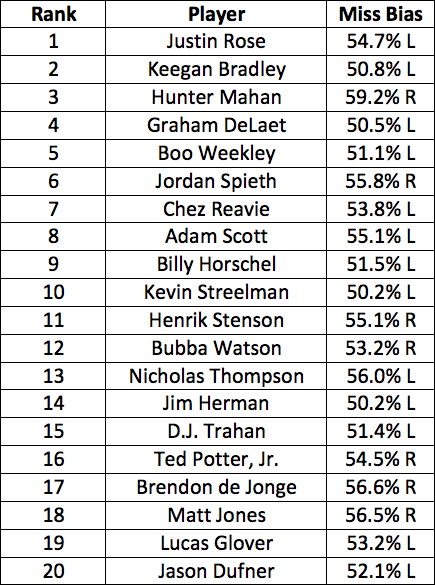
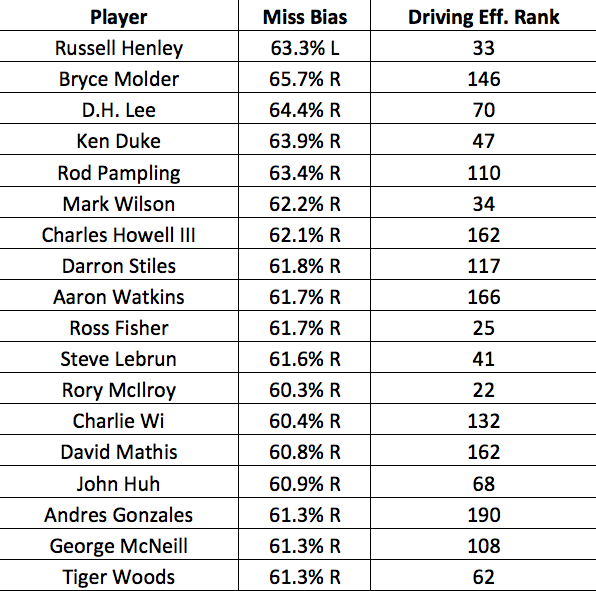
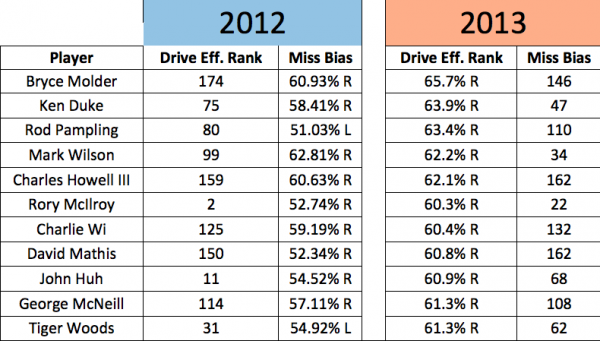


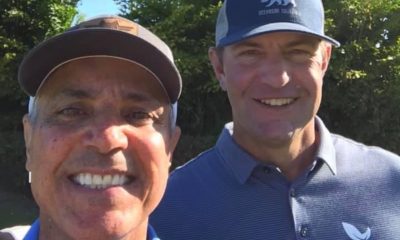









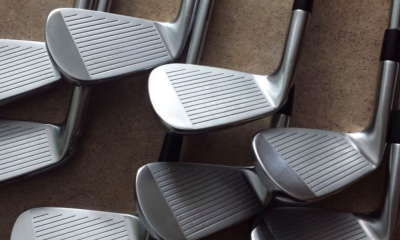













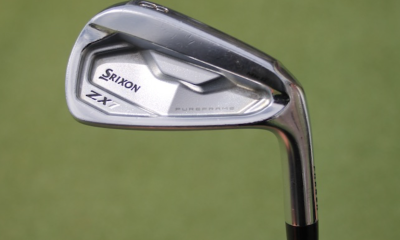



Pingback: Tips in Beating a Pro Golfer – Aymerich Golf Club
TheFightingEdFioris
Sep 4, 2014 at 1:28 pm
Cool article by the way. Always enjoy your writing.
TheFightingEdFioris
Sep 4, 2014 at 1:28 pm
No look into what they actually scored on the hole and/or the actual distance they missed the fairway by? Were Tiger’s driving stats better in 2012 when he missed it left more than right? Apparently… But did the left miss cost him a shot in a few tournaments? Absolutely (see 2012 PGA when Rory missed left off the tee basically zero times)
I am not disagreeing, you’ve clearly done a lot more homework on this than I have. But would you agree Rich that the biggest advantage to feeling that you have a one way miss is mental? To stand on a tee box and know you can swing as hard as you want and not even sniff the OB left, or not worry about blocking it high and right.
Jtriscott
Aug 7, 2013 at 12:06 pm
I think this is pretty simple…
There is usually a side on the hole that is a much better miss (ie, hazard, OB, etc).
For the RH golfer:
If the good miss is RIGHT, I just weaken my grip and make sure I am not going to HOOK the ball.
If the good miss is LEFT, I strengthen my grip and make sure I am not going to SLICE the ball.
It works all the time, 60% of the time!
Geoffrey
Apr 9, 2014 at 12:09 pm
Is there any way to interpret a players extreme left vs right miss tendency to determine if a player’s primary shot is a draw vs a fade?
Mike
Jul 31, 2013 at 9:01 pm
This article could not be more on point! The best players know which direction their ball will curve on less than perfect shots. When they talk about eliminating one side of the course, what they mean is eliminating one direction the ball will curve on their poor shots. And Matteo, as a club fitter you should know that tour players have their own clubs built with exactly this in mind. Nice article.
CT
Jul 31, 2013 at 11:22 am
“What I’ve seen from my tour players is that having a “one-way miss” is actually more about having a “one-way curve.” ”
You should make that the title of the article, and the first sentence summary to set the writing, because this information is great stuff. Because that what it is – it’s all about the favored curve.
Richie Hunt
Jul 31, 2013 at 2:22 pm
Thanks for the kind words. I had a little difficulty coming up with a good title.
Dustin
Jul 30, 2013 at 8:52 pm
The one way miss is a draw or fade. I can miss a fade down the left and a draw down the right. Point is I want a shot that I know will fade or draw.
Steve
Jul 30, 2013 at 5:53 pm
Good article…working with tour players it makes perfect sense. Keep sharing 🙂
Brian
Jul 30, 2013 at 12:09 pm
While the data is interesting, I think the conclusion you are drawing from it is a bit heavy. Just because a player misses in one direction more often off the tee, doesn’t mean they are neccesarily trying to miss in that direction. And, in my opinion, a player, especially a pro, who is truly trying to “miss” in one direction would see something more like 70/30 at the worst, not 60/40. With that said, from the pro golf that I’ve watched in person, most pros are paying no attention to the old addage and just hitting towering bombs right down the pipe. With the low spin driver and ball technology available, and the caliber of swings, it just seems to be the norm. Perhaps the approach data is more rellevant?
Also, the math behind what you consider a “myth” is that if you can eliminate one side of the course, your bigger misses are less threatening. Think about it. If you have a 20 yard wide fairway, and you know you won’t miss left, you can aim at the left side of the fairway and afford a 0-20 yard miss to the right side of the fairway. If you have no bias, then you aim down the middle, and you can afford a 0-10 yard miss in either direction.
And let’s be honest, nobody, not even the pros, can truly eliminate one side of the course. If a RH golfer has a trusty fade, at some point they are going to double cross and yank one left. That’s the true definition of a miss, otherwise it’s just a shot shape.
Richie Hunt
Jul 31, 2013 at 9:08 am
Brian,
I agree with what you are saying about the player ‘not trying to miss in that direction.’ I think those with a larger miss bias are likely struggling with a shot that does not prevent them from missing towards that bias.
Dixie Flatline
Jul 30, 2013 at 9:58 am
I think the author is taking the phrase “one way miss” and “taking one side of the golf course out of play” too literally. Those phrases are used in a discussion of ball flight off the tee, not where the ball actually lands.
Richie Hunt
Jul 30, 2013 at 10:05 am
Perhaps that is the case and I can respect your opinion on that. I know that when discussing this with some golfers, even some of my Tour clients, they think of it in very literal terms.
The main point I was trying to convey is that the miss biases on Tour are not as pronounced as some people tend to think it is and those with more pronounced miss biases tend to not hit it as well off the tee.
steff
Jul 30, 2013 at 9:23 am
A one way miss has nothing to do with the fairway! It depends on were you aim and the knowlage the if you miss it wont go left or right.
Example: You have OB left but you open up the hole the more left you aim.
This is were a “one way miss” comes in handy. You can aim close to the OB and you feel confident that if you hit it good it will go were you aim. But a miss will never go OB! A bad shot will allways go to the right and not OB.
Jokke
Jul 30, 2013 at 3:38 am
I totally agree with the above comments that the data used in this article has nothing to do with one-way misses. None whatsoever.
stephenf
Jul 30, 2013 at 3:33 am
It may be that the secondary goal of “taking one side out of play” isn’t particularly valid, but the primary reason to establish a go-to consistent curve is simply that you’ll have the whole width of a fairway to miss (or something close to it) rather than only half the fairway (as happens if you don’t know which way you’re likely to curve it, and you have to hit it down the middle and hope for the best).
Mateo
Jul 30, 2013 at 1:33 am
Wow. utterly pointless article.
This dude must be a 25 handicap.
Eliminating a side of the golf course has nothing to do with what side of the fairway you miss. It has to do with the 15 of variables he obviously will never understand.
As a teacher, a club fitter, a golf nut, and a scratch player with years of tourney experience……………. I advise everyone to disregard this article.
Richie Hunt
Jul 30, 2013 at 10:01 am
I fully stand behind what I have written.
The article is discussing about missing either left or right. The ‘one way miss’ is often described as if you miss, you miss one direction or the other (left or right).
As we can see, once the ratio is greater than 55/45 the player tends to become less effective off the tee. Particularly as the ratio gets to 60/40 or even a greater discrepancy.
I even stated in this very article that there is no difference in somebody who tends to miss left versus misses right. It’s the size of the ratio that matters more.
Why?
I know the obvious variables that can come into play with the way a hole is designed. But the *point* that has been missed is that in general, Tour players do not have very pronounced miss biases and the ones that do; generally do not drive the ball as well.
And I do not think it’s fair to assume that I’m a 25 handicapper just like it would not be fair for me to assume that you are a poor instructor because you were unable to comprehend my obvious points.
Nick
Jul 30, 2013 at 4:35 pm
Haha, you must be trolling dude. Either that or you like to run your mouth about people you don’t know.
Nick
Jul 30, 2013 at 4:36 pm
My previous comment was directed at Mateo if that wasn’t clear.
Mat
Jul 29, 2013 at 7:03 pm
Very low correlation here.
Imagine a hole that goes water-rough-fw-rough. Player aims centre-right to ensure that only a left miss would be a strong left miss to get wet. Whether the player hits the fairway or not is almost irrelevant; it’s that the ball isn’t wet.
If you’re not sure why, flip the hole; rough-fw-rough-water. It’s effectively even.
If you want to study misses like this, correlate the number of penalising hazards a player hits vs their average fairways hit. In other words, do they put it in the water more because they ignore the one-way miss. Or, an even stronger cause-effect is to see how often players miss to the opposite side of water in the rough.
Bryce Molder, at 66%, simply means he misses right more often when he misses at a rate of not quite 1 in 3. Assuming he hits 8 of 14 in a round, that means that he’s going to miss 4 right, 2 left. Just one shot per round would flip that, and he’s the worst there is.
I’m not buying this one as-is.
Richie Hunt
Jul 30, 2013 at 10:10 am
Mat,
I think you’re missing the point that players with more pronounced miss biases tend to be less effective off the tee. I also point out players like Tiger, Rory, John Huh and Rod Pampling as players whose miss biases became much more pronounced this year and they are now less effective off the tee.
My Driving Effectiveness algorithm takes into consideration shots that go in hazards (i.e. Missed Fairway – Other %) and fairway bunkers hit % as well as Avg. Distance from Edge of Fairway. I could certainly look at the correlation just between miss bias and Missed Fairway Other and fairway bunker %, but the big picture here is that when it comes to all of the main factors that relate to effectiveness off the tee; the bigger miss biases tend to make golfers less effective off the tee.
Brian
Jul 29, 2013 at 5:40 pm
I think you missed the point of having a one way miss. It’s not so much which side you miss it on, it’s that is usually the same side that you miss it on.
The point is to always miss right, or always miss left. The side doesn’t matter, just that you aren’t missing left half the time and right half the time. These stats have absolutely nothing to do with the point of a one way miss.
Nick
Jul 30, 2013 at 4:29 pm
Did you read his article? He’s saying that while people say exactly what you said, a statistical review of the best drivers shows most have no more than a five percent favoritism towards missing on one side as opposed to the the other, which many who have a much stronger statistical favoratism for one side (i.e. the guys who seem to be the best able to take one side or the other out of play) are not ranking high on driving effectiveness.
I think the issue is that a one sided driver of the ball will simply accrue less penalties, not necessarily find the fairway the best. You can find more fairways but I’ll take multiple shots out of the rough over a rinsed tee shot or god forbid OB or LB and a retee. Obviously the goal would be to find the fairway, but you can drastically improve your scoring by cutting out penalties if your game features a penality drive or two a round. You could esily be shaving upwards of two – four strokes on eliminating two bad swings that find water and force a drop way back or land OB.
Andy
Aug 8, 2013 at 7:57 pm
You didn’t even read the article dude.
Jeff
Jul 29, 2013 at 5:21 pm
on most golf holes, there is a side that is a worse miss than others. i think in general you see that professional golfers play the odds more than anything else. if there is OB left and lateral hazard right, a right miss is better, but that could just as easily be switched. therefore, having a “one side out” that ignores the particular hole seems worse to me than trying to hit a shot for the hole. i play (and i think most pros play) to a spot that is safe and then work the ball away from the worst trouble. whether it’s right or left, stay away from the worst trouble.